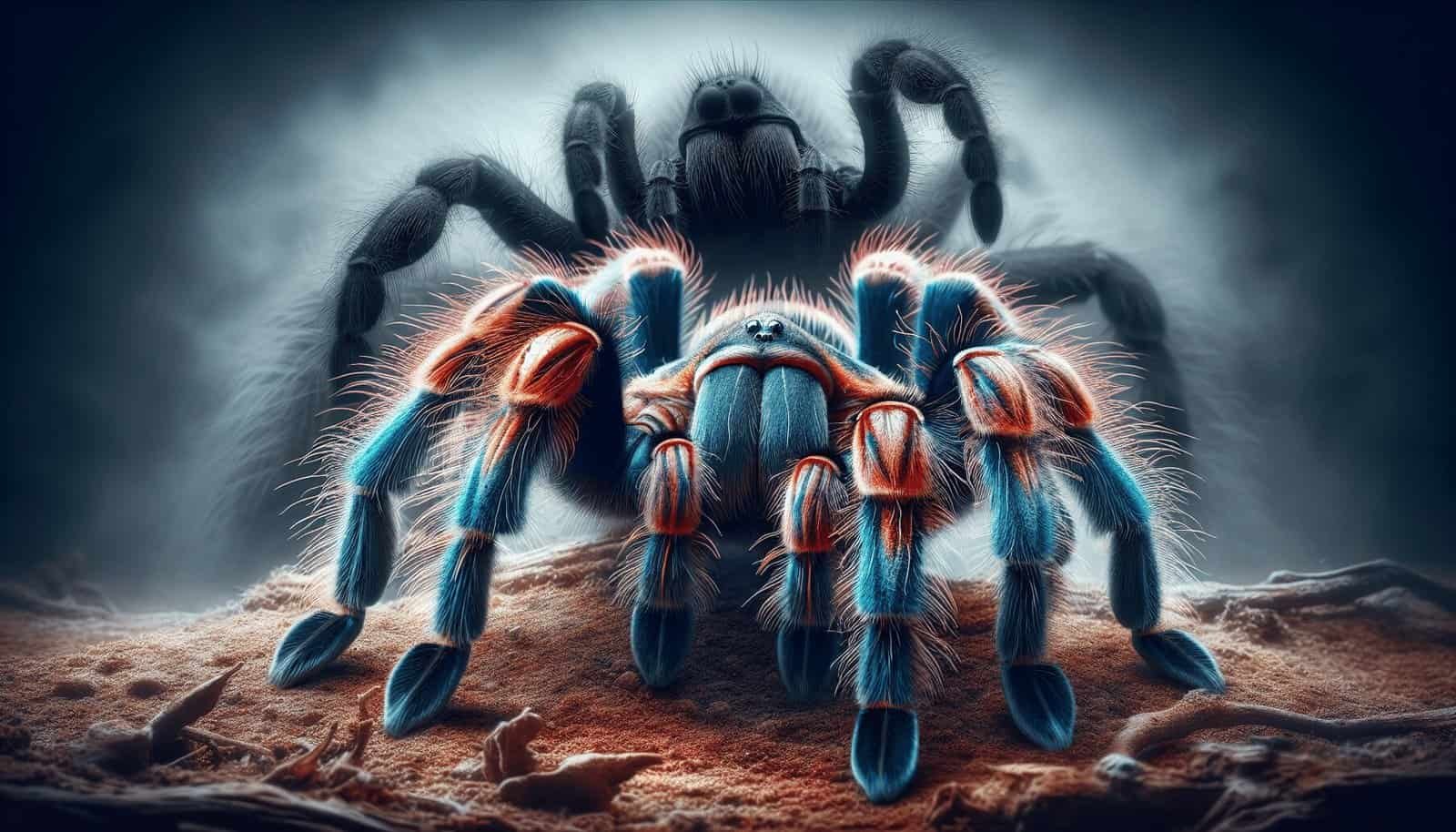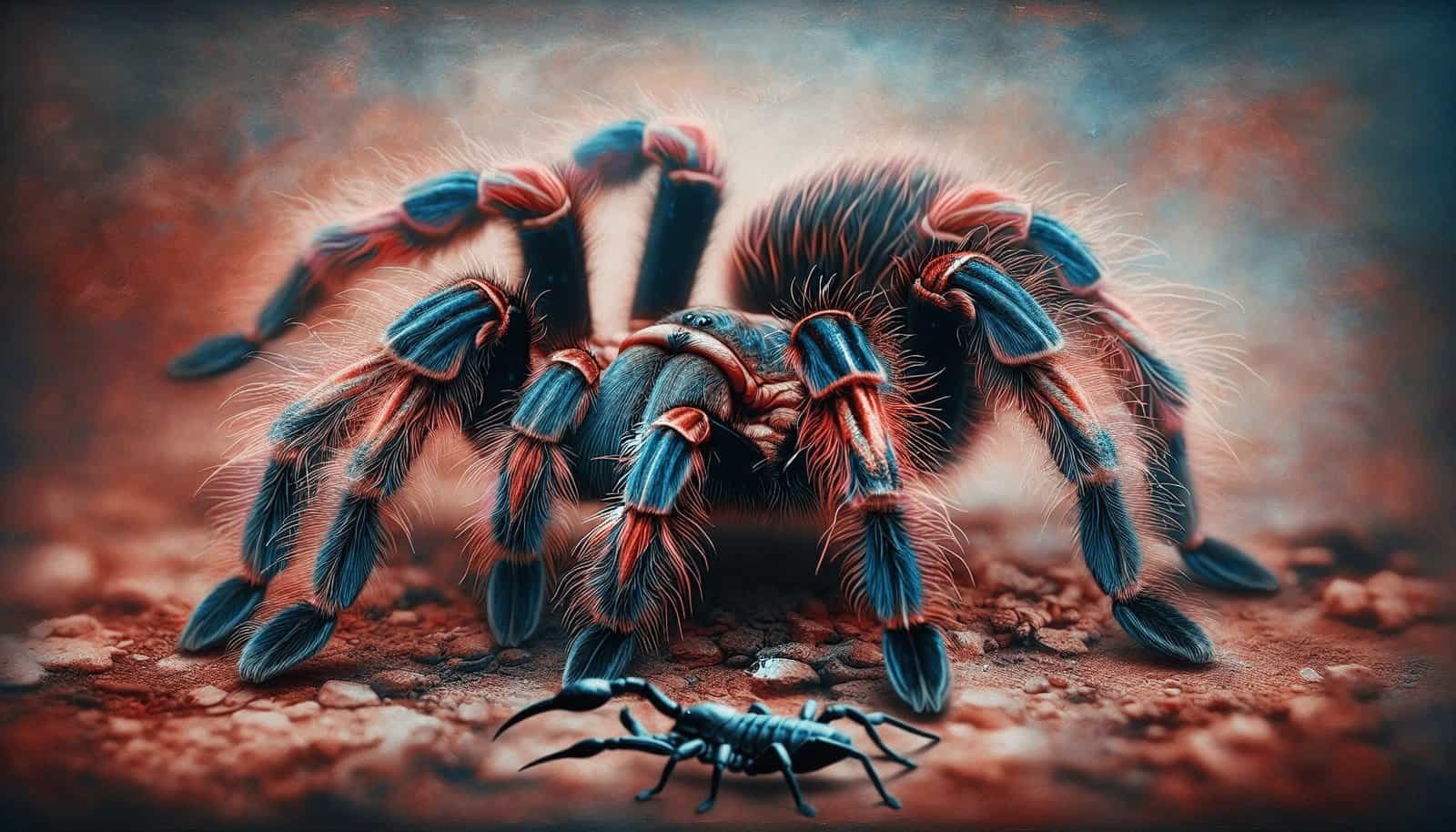How Do Tarantulas Cope With Threats From Predatory Arachnids Like Pseudoscorpions?
What would you do if you were a tarantula facing threats from smaller yet formidable predatory arachnids like pseudoscorpions? Tarantulas are large, often misunderstood spiders, and despite their fearsome appearance, they encounter threats from other arachnids. This article aims to uncover the fascinating ways tarantulas cope with such challenges.
Understanding Tarantulas
Tarantulas are members of the family Theraphosidae, renowned for their size and often menacing looks. They are mostly found in tropical, subtropical, and arid regions across the globe. With their robust bodies covered in hair and fangs equipped with venom, tarantulas might seem like apex predators. But their world is more complex than it appears.
Physical Characteristics
Tarantulas are known for their large sizes, with some species boasting leg spans up to 12 inches. They possess eight legs and a pair of pedipalps near their mouths, used for sensory purposes and handling food. These spiders are covered in urticating hairs that can be a defensive mechanism against predators.
Habitat
Typically, tarantulas prefer to live in burrows or within natural shelters like under rocks or within tree bark. Depending on the species, their habitats range from rainforests to deserts.
Diet
As opportunistic feeders, tarantulas prey on insects, other arthropods, small mammals, and even birds. Their hunting strategy primarily relies on ambush, waiting for prey to come close enough before striking.
Pseudoscorpions: The Tiny Predators
Despite their small size, pseudoscorpions can pose a significant threat to tarantulas and other large spiders. These minute arachnids belong to the order Pseudoscorpiones and resemble scorpions but lack a tail and stinger.
What Are Pseudoscorpions?
Pseudoscorpions are generally less than 5mm in length and possess pincer-like pedipalps, which they use to catch and immobilize prey. These arachnids excrete venom through glands located in their pedipalps, making them effective predators.
Habitats and Behavior
Pseudoscorpions thrive in various environments, from leaf litter to under stones and bark. They are often found in symbiotic relationships, hitching rides on larger insects to move from place to place.
Interaction with Other Arachnids
Though tiny, pseudoscorpions can be surprisingly aggressive towards their prey, including spiders. They often target vulnerable spots, delivering venom to subdue larger opponents.

Defense Mechanisms of Tarantulas
To cope with predatory threats, tarantulas have developed several defense mechanisms. These strategies range from physical defenses to behavioral adaptations.
Urticating Hairs
One of the primary defensive tools at a tarantula’s disposal is its urticating hairs. These are specialized bristles that can be flicked off into predators’ faces, causing irritation and deterring attacks.
Venom
Tarantulas possess venom that can be utilized defensively. While primarily intended for subduing prey, the venom can cause significant discomfort to potential attackers, including pseudoscorpions.
Defensive Posture
When threatened, tarantulas often adopt a defensive posture, lifting their front legs to appear more intimidating. This behavior can sometimes be enough to ward off aggressive pseudoscorpions.
Retreat and Camouflage
Many tarantulas prefer to avoid conflict by retreating to their burrows or blending into their surroundings. Their coloration often provides effective camouflage within their natural habitat.
Behavioral Adaptations
Aside from physical defenses, tarantulas exhibit various behavioral adaptations to mitigate the risks posed by pseudoscorpions and other predators.
Nocturnal Activity
Most tarantulas are nocturnal, meaning they are active during the night. This behavior helps them avoid many daytime predators, including pseudoscorpions, who may be less active during these hours.
Burrowing
Tarantulas often dig elaborate burrows. These structures not only provide shelter but also serve as a first line of defense against intruders. Burrows have narrow entrances making it hard for larger predators to penetrate.
Molting
Molting is a vulnerable time for tarantulas, as they shed their exoskeletons to grow. During this period, they are particularly at risk from predators, including pseudoscorpions. Tarantulas tend to secure themselves in their burrows, reducing the chance of encountering threats.

The Role of Environment in Predation
Understanding how environmental factors influence predator-prey interactions between tarantulas and pseudoscorpions can provide further insights into their coping mechanisms.
Microhabitat Preferences
Different tarantula species show preferences for various microhabitats – some favor damp, concealed areas while others prefer arid, open spaces. These choices can impact their exposure to pseudoscorpions.
Climate and Seasonal Changes
Seasonal changes can affect the activity levels and distribution of both tarantulas and pseudoscorpions. For instance, during dry seasons, pseudoscorpions might be more active in seeking prey, while tarantulas may retreat deeper into their burrows to avoid desiccation.
Availability of Prey
The abundance of prey can influence the activity levels of both tarantulas and pseudoscorpions. In environments where prey is scarce, pseudoscorpions might be more aggressive in attacking larger spiders, including tarantulas.
Interactions Beyond Predation
While the relationship between tarantulas and pseudoscorpions is often marked by predatory behavior, there are instances of more neutral or even symbiotic interactions.
Phoresy
Phoresy is a behavior where one organism attaches itself to another for transportation. Pseudoscorpions are known to hitch rides on larger animals, including tarantulas, to find new habitats or escape unfavorable conditions.
Shared Microhabitats
In some cases, tarantulas and pseudoscorpions might coexist within the same microhabitat. This can happen in environments where resources are abundant, reducing direct competition and predation.
Comparative Analysis: Tarantulas vs. Pseudoscorpions
To summarize the differences and similarities between tarantulas and pseudoscorpions, consider the following table:
| Aspect | Tarantulas | Pseudoscorpions |
|---|---|---|
| Size | Large (up to 12 inches leg span) | Small (generally less than 5mm) |
| Habitat | Various (burrows, under rocks, trees) | Leaf litter, under stones, bark |
| Diet | Insects, small mammals, birds | Small arthropods, mites |
| Defensive Mechanisms | Urticating hairs, venom, retreat | Venomous pedipalps, pincer-like claws |
| Behavior | Nocturnal, camouflage, burrowing | Aggressive towards prey, phoresy |
Human Influence on Tarantula and Pseudoscorpion Interactions
Human activities, such as habitat destruction and climate change, can significantly influence the interactions between tarantulas and pseudoscorpions.
Habitat Destruction
Deforestation and urbanization can lead to the loss of natural habitats for both tarantulas and pseudoscorpions. This can result in increased encounters and competition for limited resources.
Climate Change
Rising temperatures and changes in precipitation patterns can alter the distribution of both tarantulas and pseudoscorpions. This might lead to changes in their interactions and the strategies they use to cope with threats.
Conservation and Future Research
Ensuring the conservation of tarantulas and pseudoscorpions requires a better understanding of their ecology and interactions. Future research can help uncover more details about their behaviors and how they adapt to changing environments.
Importance of Conservation
Preserving the habitats of tarantulas and pseudoscorpions is crucial for maintaining the ecological balance. Both play significant roles in controlling insect populations and contributing to the biodiversity of their ecosystems.
Ongoing Research
Researchers continue to study the behaviors and interactions between tarantulas and pseudoscorpions. This research is vital for developing effective conservation strategies and understanding the evolutionary adaptations that allow these arachnids to coexist.
Conclusion
Navigating a world filled with threats requires adaptation and strategy. Tarantulas, with their range of physical and behavioral defenses, showcase remarkable resilience in face of predatory arachnids like pseudoscorpions. Both tarantulas and pseudoscorpions stand as a testament to the intricate balance within ecosystems, each playing its part in the ongoing dance of survival and coexistence.